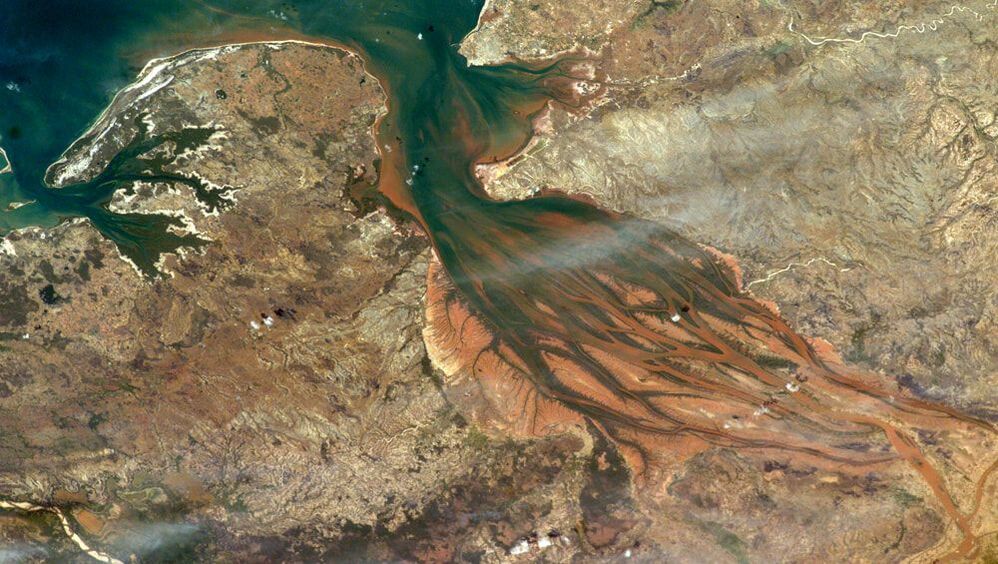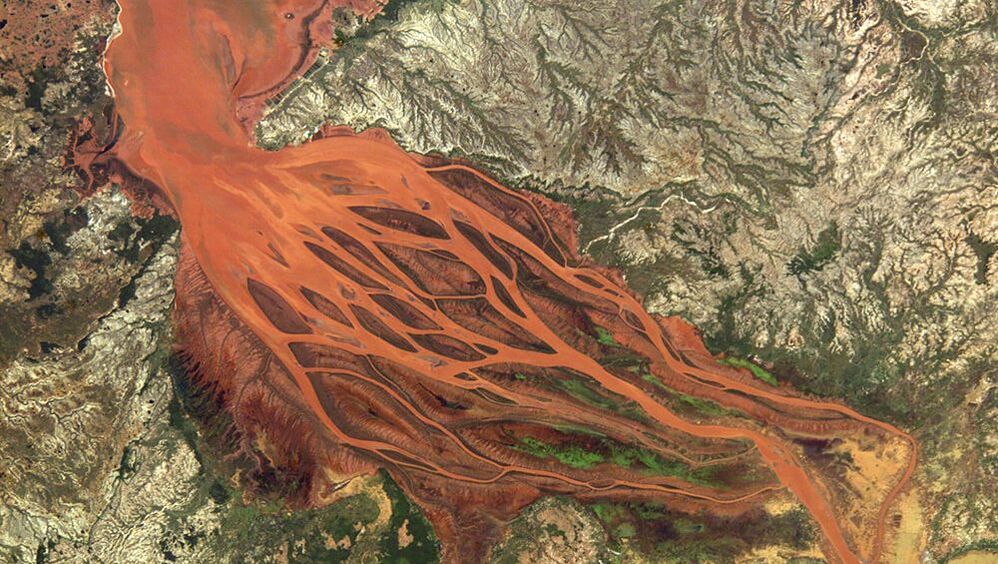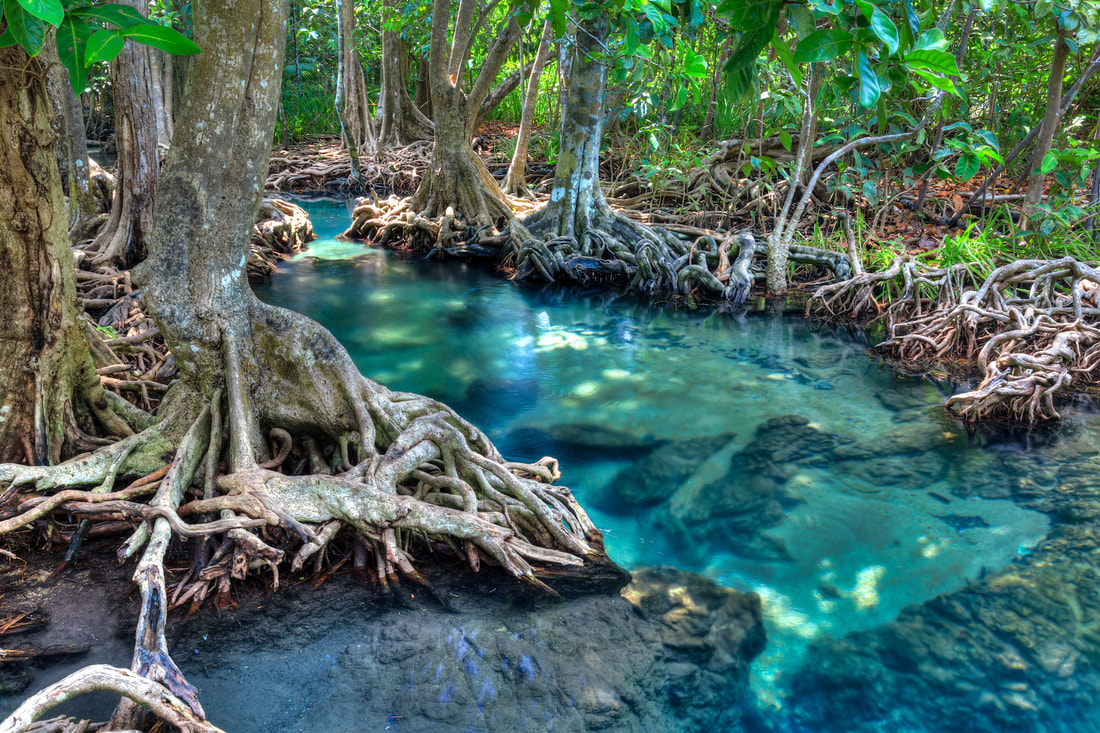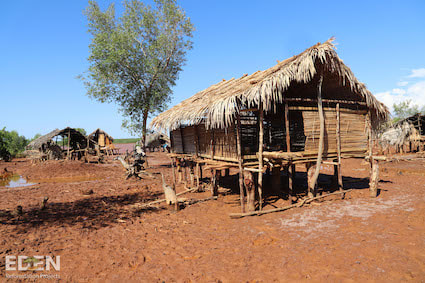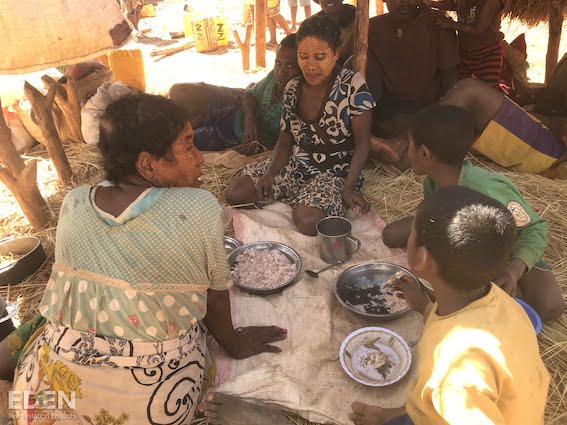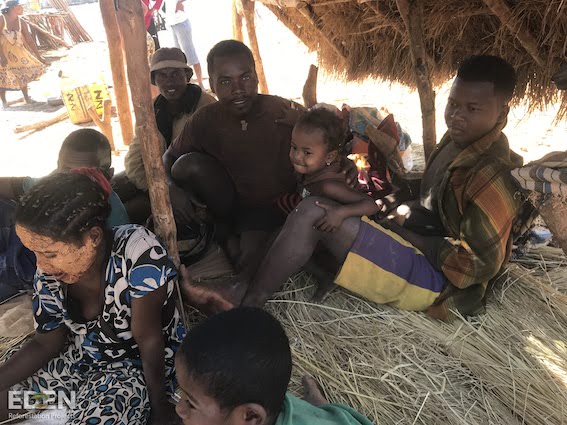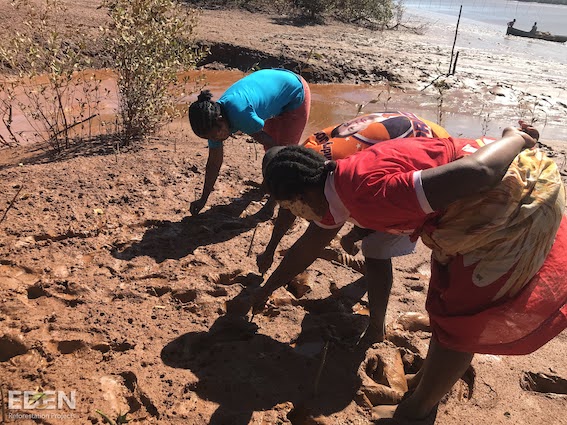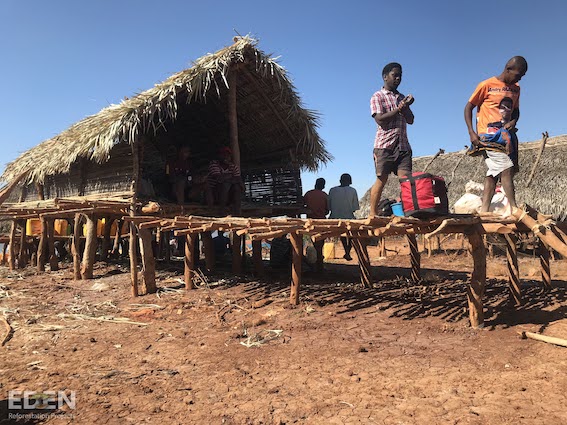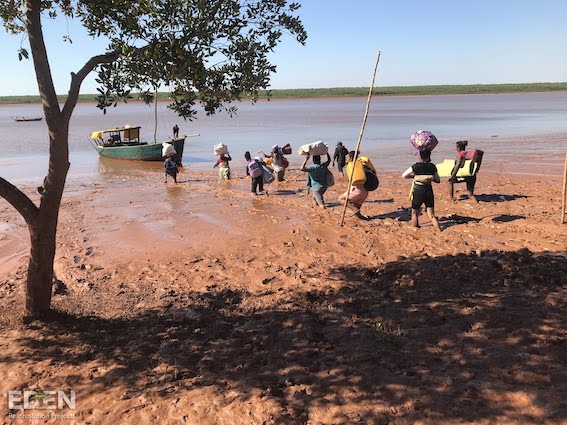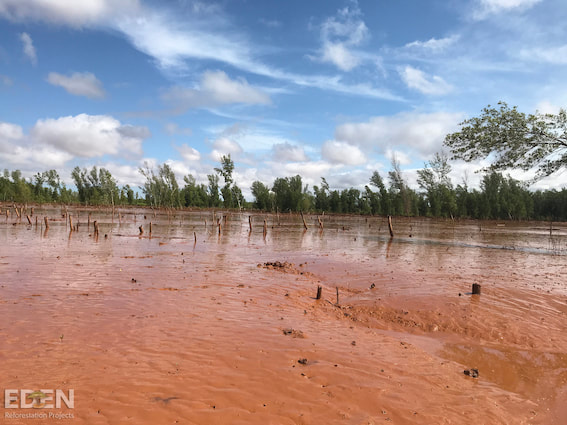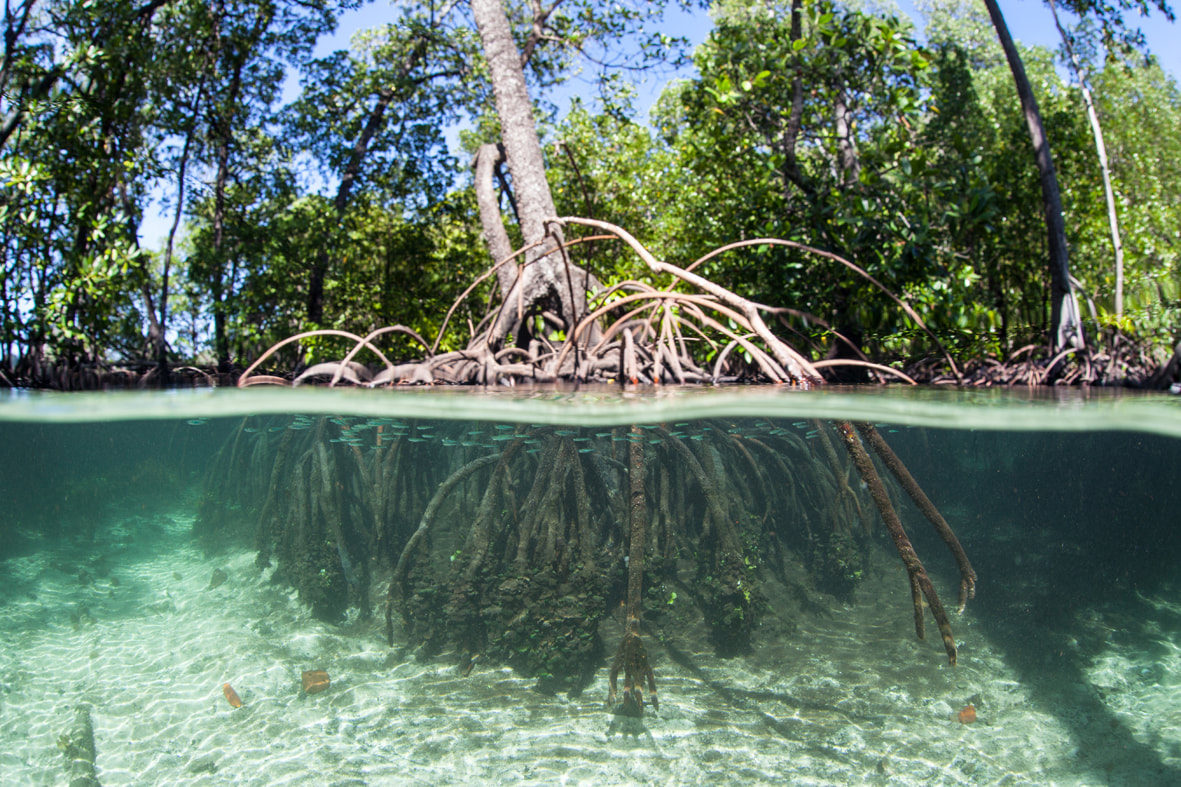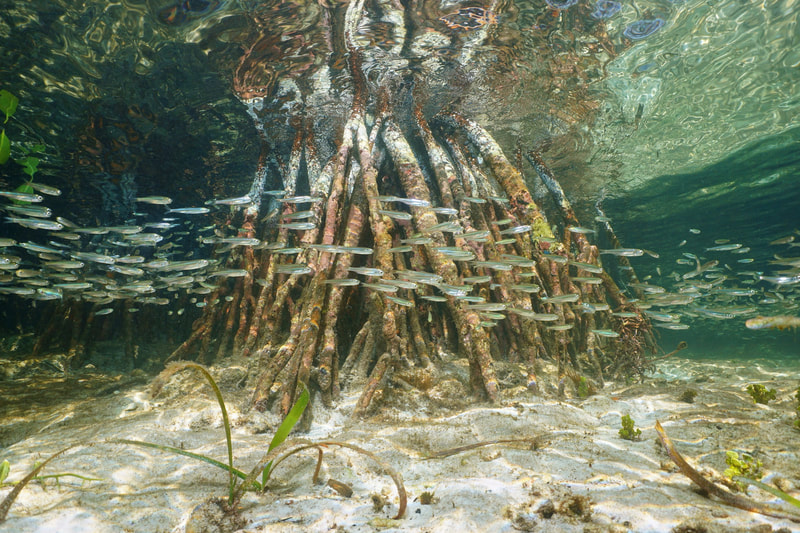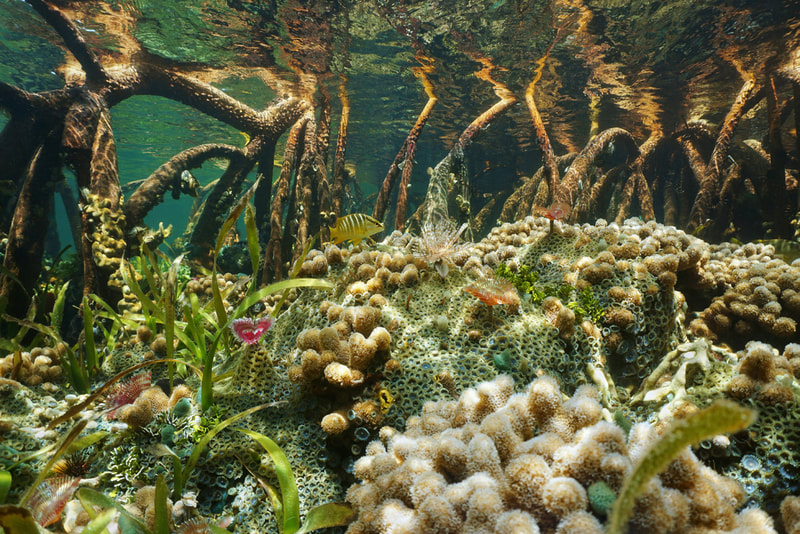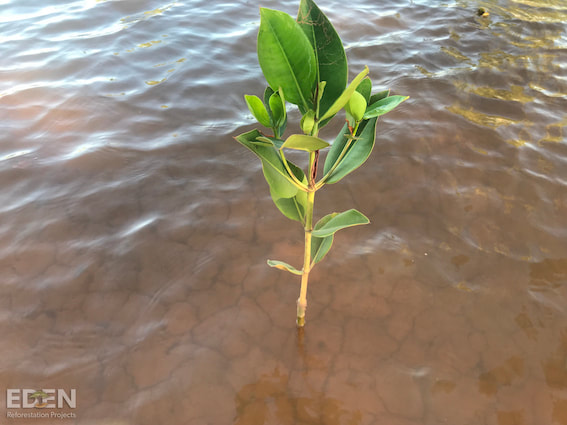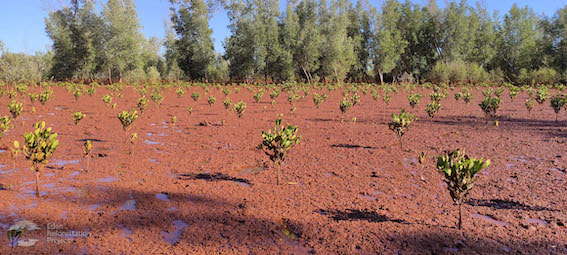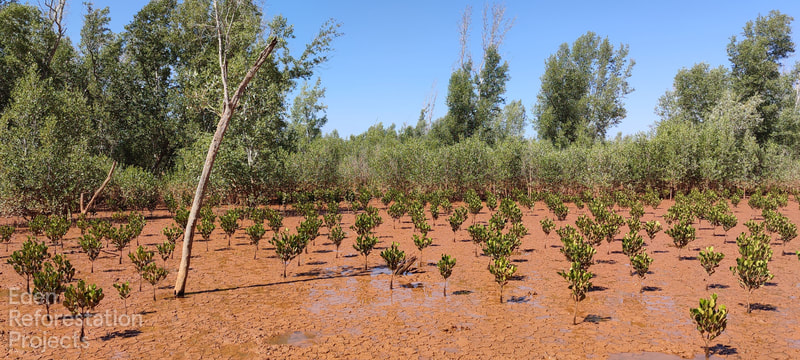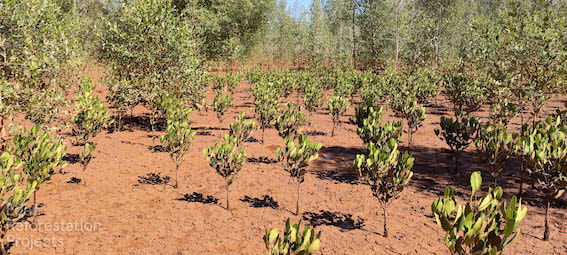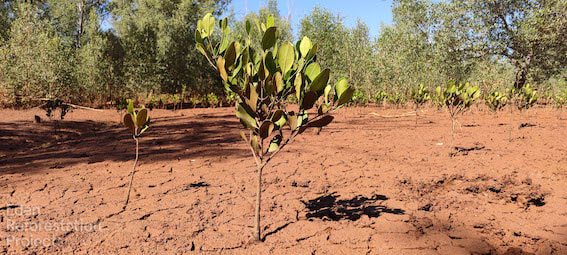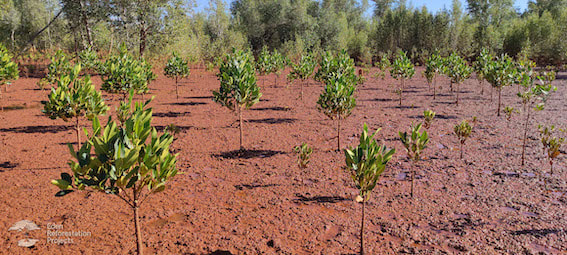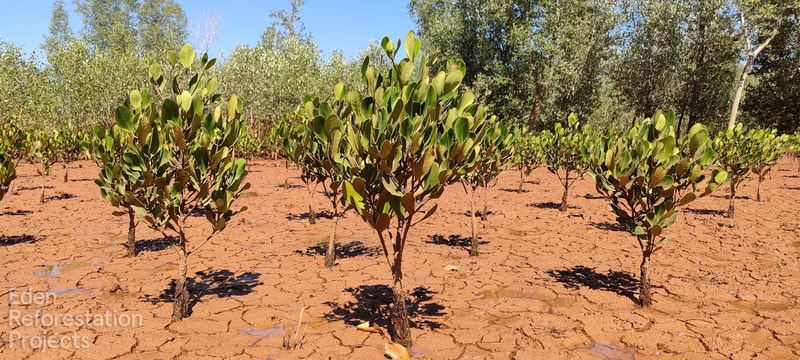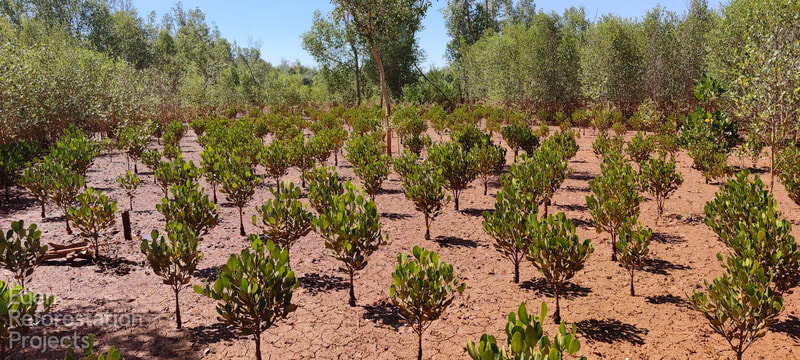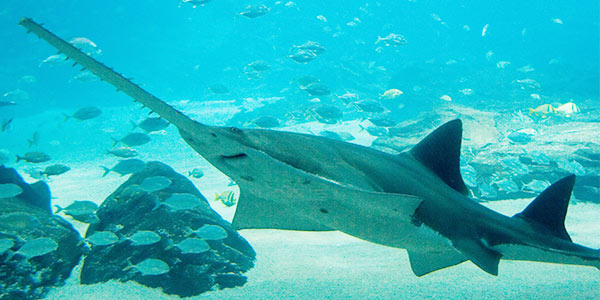On the north-west side of Madagascar sits the Betsiboka River. As one of the largest rivers on the island, it covers 525 kilometres (almost twice the size of the River Thames).
It was the sight of this river by astronauts circling the Earth on the International Space Station, which earned Madagascar the moniker “Bleeding Island.” From above the earth, the river appears to be a markedly different colour from other waterways on the planet. It resembles blood flowing into the ocean.
But what causes this vibrant colour? And why does it matter to us, as we sit at our desks or read this on our smartphones?
But what causes this vibrant colour? And why does it matter to us, as we sit at our desks or read this on our smartphones?
Images care of Nasa Earth Observatory taken before and after heavy rain
In simple terms, the red-coloured water is the result of the ground being washed into the river from coastal soil erosion.
The increasing deforestation of Madagascar intensifies this erosion. Rich soil, with its nutrients needed for agriculture and for wildlife habitats, is no longer held together by tree roots and is lost to the sea with every rainfall.
The soil becomes increasingly poorer, less rich in nutrients, and less fertile. The land begins to resemble a Martian landscape – red and bare. This soil loss poses a threat to agriculture, the coastal people and the wildlife that call the Betsiboka River their home.
The increasing deforestation of Madagascar intensifies this erosion. Rich soil, with its nutrients needed for agriculture and for wildlife habitats, is no longer held together by tree roots and is lost to the sea with every rainfall.
The soil becomes increasingly poorer, less rich in nutrients, and less fertile. The land begins to resemble a Martian landscape – red and bare. This soil loss poses a threat to agriculture, the coastal people and the wildlife that call the Betsiboka River their home.
Cue nature's bodyguard – the humble mangrove.
|
The mangrove is a true nature ninja, boasting a bounty of mind-blowing talents and skills. Notably, it has a remarkable ability to capture carbon up to 10 times faster per hectare compared to land-based trees.
What’s more, its dense and complex root system acts as a defender of the soil and a matchmaker for sediments. Mangroves serve as the ultimate party host, trapping and collecting the sediments, preventing soil erosion whilst simultaneously creating the perfect habitat for local wildlife to settle in and call it their home. |
We have the solution right there - plant and nurture mangroves in the deforested areas and you will reduce soil erosion, and build biodiversity back up. So that’s what we’re doing!
Alongside other plots in this vitally important location (one of which you can read about here) we are supporting communities in Madagascar to rebuild their country’s natural capital and further enrich the sustainable benefits that their ecosystem has to offer.
Discovering the Eclectic Residents of the Mighty Mangrove
|
Madagascar is renowned for its biodiversity - the wealth of furry friends and diverse ecosystems showcased in the infamous film "Madagascar" alone can help to show a minor glimpse of this (don’t worry, we don’t use the film as a source for evidence).
In the world of vascular plants alone (which is plants including the likes of ferns and conifers), 82% of the 11,515 native species found in the wild in Madagascar can’t be found anywhere else on Earth - this is known as ‘endemic’ plants. So if Madagascar disappeared tomorrow, we would lose around 9,442 species of these plants. The richness of Madagascar’s natural world makes the mind boggle.
|
The importance of mangroves extends beyond plants, as 75% of the world's tropical fish species are born within their roots. Various marine life, including crustaceans, prawns, lobsters, and crabs, thrive in mangrove ecosystems. This bustling network of marine wildlife supports local fisheries, providing food and revenue for coastal communities. Without mangroves, this whole community ecosystem crashes down.
Planting for a Thriving Future
Recent findings reveal that Madagascar experienced some of the worst mangrove loss in the West Indian Ocean region between 1996 and 2020. Deforestation was largely driven by uncontrolled wood collection for charcoal production, putting the invaluable benefits of mangroves in jeopardy.
In July 2021, we took action by expanding our efforts in Madagascar and opening up our second mangrove planting site - Bemangoraka. A total of 602,694 trees were planted in this plot to champion the humble mangrove and support the local community.
The creation of mangrove sites like these help to provide sustainable income streams for local community members through stable and viable job opportunities. Across this entire planting site, 237 people were provided with employment. That means stable wages, access to better education and improved healthcare for countless local families. And most importantly, shifts the local communities' dependence from the destruction of their forests for income, to one of restoration.
|
Conserving and reforesting vital mangrove areas will support local communities, restore biodiversity, save marine and terrestrial life, and provide an essential habitat for a number of endangered species, such as the Malagasy sacred ibis and the critically endangered giant sawfish.
|
Image c/o National Wildlife Federation
|
It's undeniable how vital the mighty mangrove is, in addressing both the climate and biodiversity crises. And how important it is that we continue to look for ways to support them. Now it's our job to grow, restore and safeguard these forests into the future, helping them do what they do best - protecting us and our planet.

